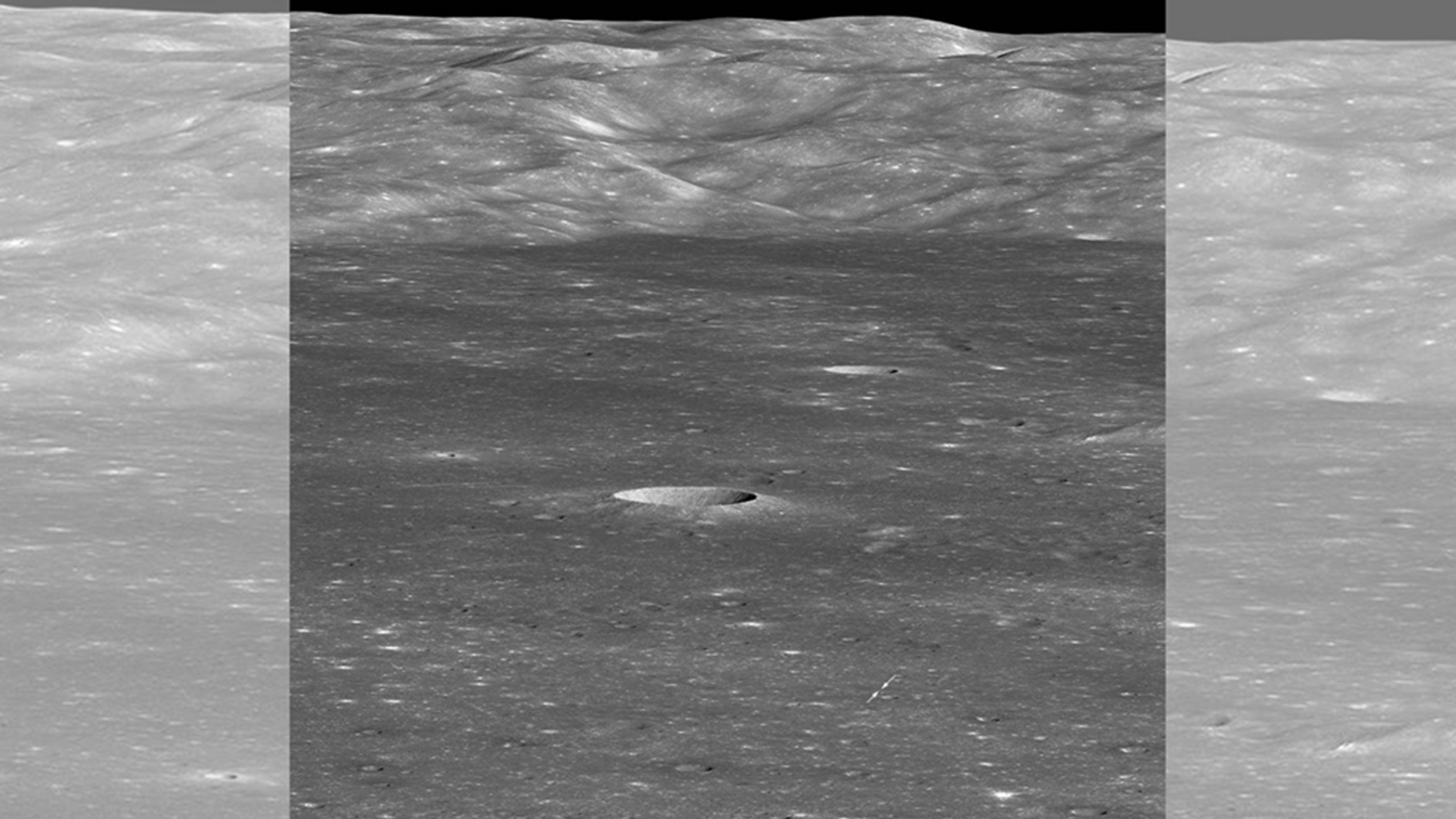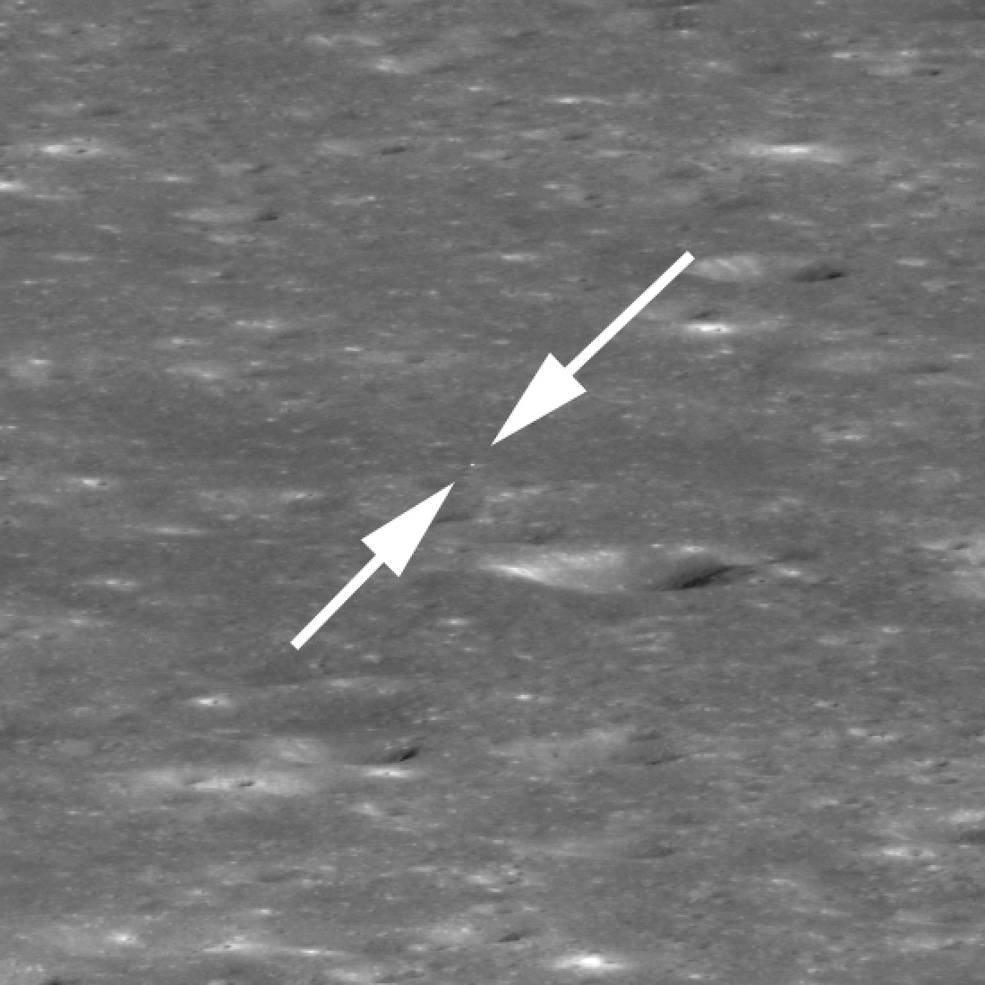
Technology
11:31, 08-Feb-2019
NASA probe captures picture of Chang'e-4's landing site
Updated
12:35, 08-Feb-2019
CGTN
01:24

The U.S. space agency NASA has released its first look of China's Chang'e-4 lunar landing site.
NASA's Lunar Reconnaissance Orbiter (LRO) approached the Von Karman crater on which the Chinese spacecraft Chang'e-4 landed, nearly four weeks after its landing.
On January 30, the LRO rolled 70 degrees to the west to snap a spectacular view looking across the floor toward the west wall, according to NASA.
However, about 330 kilometers to the east of the landing site, LRO captured a picture only about two pixels across and didn't detect the small rover Yutu-2 or Jade Rabbit-2.
The black-and-white picture released by NASA on Wednesday showed the west wall of Von Karman crater, a massive mountain range, rising over 3,000 meters above the floor.

The area around the lander is enlarged by a factor of two relative to the native pixel scale; the bright speck between two arrows is the lander. /courtesy of NASA/GSFC/Arizona State University
The area around the lander is enlarged by a factor of two relative to the native pixel scale; the bright speck between two arrows is the lander. /courtesy of NASA/GSFC/Arizona State University
China's Chang'e-4 probe, launched on December 8 in 2018, landed on the Von Karman Crater in the South Pole-Aitken Basin on the far side of the moon on January 3.
The rover and the lander of the Chang'e-4 probe were awakened by the sunlight after a long "sleep" during an extremely cold 14-day-long night on the moon on January 30.
NASA announced its plan last month to cooperate with Chinese space authorities to observe a signature of the landing plume of Chang'e-4's lunar lander.
NASA and the Chinese National Space Administration agreed that any significant findings resulting from this coordination activity will be shared with the global research community at a UN meeting to be held in mid-February in Vienna.
NASA said its cooperation with China "transparent, reciprocal and mutually beneficial."
(Cover: The landing site of China's Chang'e-4 lander on the Von Karman Crater on the far side of the moon /courtesy of NASA/GSFC/Arizona State University)
Source(s): Xinhua News Agency

SITEMAP
Copyright © 2018 CGTN. Beijing ICP prepared NO.16065310-3
Copyright © 2018 CGTN. Beijing ICP prepared NO.16065310-3